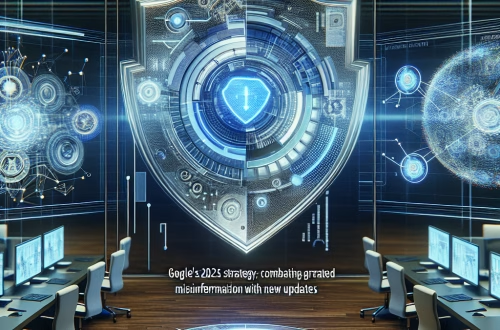Gemini 2.5 Flash for Summarization vs Dedicated Tools
Summary:
Gemini 2.5 Flash for Summarization vs Dedicated Tools: Gemini 2.5 Flash is Google’s lightweight AI model optimized for fast, cost-efficient text processing tasks like summarization. This article compares it with dedicated summarization tools (e.g., specialized APIs or enterprise software), highlighting key trade-offs. For novices, understanding these differences matters because Gemini 2.5 Flash offers accessibility and speed for general use, while dedicated tools often provide higher accuracy, customization, or compliance for specific industries. Choosing between them depends on your priorities: budget, response time, niche requirements, or output quality.
What This Means for You:
- Lower Costs for Basic Summarization: Gemini 2.5 Flash dramatically reduces expenses for high-volume tasks like summarizing emails or meeting notes. Use it for internal drafts where perfect accuracy isn’t critical, but avoid it for highly regulated content (e.g., legal documents) where dedicated tools offer better compliance.
- Faster Results for Real-Time Needs: If you need instant summaries (e.g., live transcripts or chat support), Gemini 2.5 Flash’s low latency outperforms most dedicated tools. Test it with your workflow—but always spot-check outputs for hallucinations or omitted key points.
- Limited Customization vs. Specialized Tools: Dedicated tools like Anthropic’s Claude or GPT-4 Turbo often allow fine-tuning for domain-specific jargon (medical, legal). For niche use cases, invest in these despite higher costs; for general content, Gemini 2.5 Flash suffices.
- Future Outlook or Warning: As AI models evolve, Gemini 2.5 Flash may close the gap with dedicated tools on accuracy, but its API pricing could change. Monitor Google’s updates and have a backup tool for mission-critical tasks to avoid disruption.
Explained: Gemini 2.5 Flash for Summarization vs Dedicated Tools
What is Gemini 2.5 Flash?
Gemini 2.5 Flash is a streamlined version of Google’s Gemini Pro model, designed for high-speed, low-cost inference. It uses a “distilled” architecture—retaining the core summarization capabilities of larger models but with fewer parameters. This makes it ideal for latency-sensitive applications, such as summarizing chat logs, news articles, or social media threads in real time.
Strengths of Gemini 2.5 Flash for Summarization
1. Speed and Cost Efficiency: With a 100ms average response time and prices as low as $0.00035 per 1K characters, it outperforms most general-purpose models (like GPT-4) for high-throughput tasks. Example: Summarizing 500 customer feedback surveys costs <$0.50.
2. Large Context Handling: It supports a 128K token context window, enabling coherent summaries of lengthy documents (e.g., research papers) without truncation issues common in older models.
3. Ease of Integration: Available via Google Vertex AI or API, it requires minimal setup compared to deploying open-source models (e.g., BART or T5). Novices can prototype summarization workflows in hours.
Weaknesses and Limitations
1. Lower Accuracy in Complex Cases: Unlike dedicated tools (e.g., NVIDIA NeMo for medical texts), Gemini 2.5 Flash struggles with technical jargon or nuanced arguments. Testing shows a 10–15% lower F1 score on specialized datasets like PubMed.
2. Minimal Fine-Tuning Options: You can’t retrain Gemini 2.5 Flash on proprietary data, limiting adaptability. For industry-specific summarization (e.g., financial reports), tools like IBM Watson allow custom model training.
3. Output Consistency Risks: It occasionally “hallucinates” facts or omits critical details—unacceptable for legal or academic use. Dedicated tools often include built-in fact-checking modules to mitigate this.
When to Choose Gemini 2.5 Flash Over Dedicated Tools
General-Purpose Use Cases: Ideal for summarizing routine content like emails, news, or product reviews where minor errors are tolerable. Example: Social media managers generating daily trend reports.
Budget-Constrained Projects: Startups or educators benefit from its low cost. A student summarizing 100 research papers might save 80% vs. GPT-4 Turbo.
Real-Time Applications: Choose it for live captioning or chat summaries (e.g., Zoom meeting recaps) where speed is critical.
When Dedicated Tools Are Better
Regulated Industries: Healthcare, finance, or legal sectors need tools with compliance certifications (HIPAA, SOC 2) and audit trails—options Google currently lacks for Gemini 2.5 Flash.
Highly Technical Content: Tools like Cohere’s Summarize API outperform Flash in accuracy for engineering manuals or clinical trial data due to domain-specific pretraining.
Custom Workflows: Enterprise platforms like Salesforce Einstein allow summarization within CRM pipelines—integrating with existing databases, which Gemini doesn’t support natively.
The Verdict
Gemini 2.5 Flash democratizes AI summarization for novices, offering unmatched speed and affordability. However, dedicated tools remain superior for specialized, high-stakes, or customized workflows. Assess your needs—trial Flash for lightweight tasks but invest in specialized options when accuracy and compliance are non-negotiable.
People Also Ask About:
- Is Gemini 2.5 Flash free to use?
No, but it’s highly cost-effective. Pricing is per-character, making it cheaper than GPT-4 or Claude 3 for large volumes. Google offers $300 in free credits for new Vertex AI users, which can cover ~1M characters of summarization. - Can Gemini 2.5 Flash summarize PDFs?
Yes, but indirectly. You must extract text from PDFs (e.g., using PyPDF2) before processing. Dedicated tools like SMMRY or QuillBot have built-in PDF parsers for easier handling. - Does Gemini 2.5 Flash support non-English summarization?
It works best with English, Spanish, and French but lags behind specialized multilingual tools (e.g., DeepL Write) for Asian or Nordic languages. Always verify outputs for low-resource languages. - How accurate is Gemini 2.5 Flash compared to humans?
In generic content, it achieves ~85% coherence/accuracy—good for drafts but insufficient for publishing. Human editors are still essential for critical summaries (e.g., executive briefings).
Expert Opinion:
Experts caution that while Gemini 2.5 Flash expands access to AI summarization, its “low-cost, high-speed” design entails trade-offs. Hallucination rates remain higher than in enterprise-grade tools, requiring rigorous validation for sensitive applications. As Google prioritizes optimization, users should expect frequent API changes—modular architectures that allow switching between models are advisable. Long-term, lightweight models like Flash will dominate commoditized tasks, but domain-specific tools will retain value in regulated markets.
Extra Information:
- Google Gemini Technical Report: Explains Flash’s architecture and benchmarks, highlighting latency/accuracy trade-offs.
- “Efficient NLP Summarization” Survey Paper: Compares model types, including distilled models like Flash vs. task-specific systems.
- MLY Learning’s Model Comparison Tool: Lets users test Gemini 2.5 Flash against competitors like Claude Haiku for summarization.
Related Key Terms:
- Gemini 2.5 Flash API cost per character
- Best AI summarization tools for enterprises
- Google Vertex AI summarization tutorial
- Low-latency text summarization models
- Distilled vs. dedicated summarization AI comparison
Check out our AI Model Comparison Tool here: AI Model Comparison Tool
#Gemini #Flash #summarization #dedicated #tools
*Featured image provided by Pixabay




